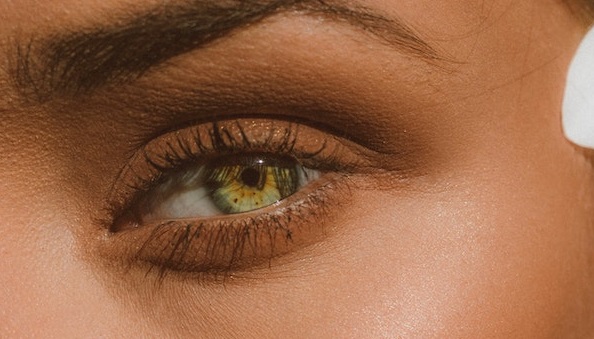
Why do eyes get worse with age? It happens because the lenses of the eye become less flexible and it becomes difficult to focus the light.
How does the eye work? Light photons come from the sun, or any other light source, bounce off an object and go into our eye. The light enters through the cornea, which is the clear tissue that covers the front of the eye. It is there to protect the eye and to let light in. The cornea is made of a layer of epithelium, which is a type of tissue found all over the body. The epithelium in the eye is transparent because it contains no blood vessels, meaning it has to get nourishment from the tears. Then the cornea has a layer called the stroma, which gives it its shape and strength. The light passes through the cornea and passes through the pupil, which is the hole in the center of the eye. The pupil can get wider and narrower to alter the amount of light that enters the eye. It contracts when it is bright and expands when there isn’t much available light. The light then travels through the lens, where it is focused on the retina at the back of the eye. The retina has rods and cones which pick up different wavelengths of light entering the eye and transfer them to the optic nerve as an electrical signal. The optic nerve is connected to the back of the retina* and the signal goes to the brain and the brain translates it into an image.
So, what happens as we get older. There are several things that happen to our eyes, but the most common eye problem with people as they age is shortsightedness, or presbyopia. The world itself is a dig at people’s eyes worsening as they age because presbus comes from the Greek for “old man” and opai means “eye”.
We can see because our lens focuses the light that comes through the cornea on to the retina. It does this by changing its shape and it can change its shape because it is soft and because there is a muscle, called the ciliary muscle that pulls on it. The ciliary muscle is a ring of muscle that is attached to the lens at the edges. When we look at things that are far away, the muscles attached to the lens relax and the lens becomes thinner and larger. This allows light from farther away to be focused. When we are looking at close by objects, the muscles contract, making the lens thicker, smaller, and more rounded in the center.
As we get older, our lens hardens. When we are young it is soft and very flexible. The ciliary muscle has no problem flexing and relaxing it to change focus from far things to near things. As we hit our 40s, it hardens and the muscle can no longer squeeze it as easily. That means we have no problem seeing far away things because we can relax it, but we cannot focus on close up things. This causes short-sightedness.
A second problem that can happen when you get old is the lens can become cloudy. The lens is obviously clear, which is why it is able to focus light. As people age, proteins and fibers in the tissue that make up the lens start to break down and clump together, which makes the lens cloudy. With some people it can stop here, but with some people it continues to worsen. The clouded areas get denser and the lumps of broken down proteins scatter the light waves that come into the eye. They can’t hit their intended target and the vision becomes hazy and blurred.
These days, both of these conditions are treatable. Presbyopia can be treated with reading glasses and cataracts can be treated with surgery. It is possible to remove the clouded lens and replace it with an artificial one.
*As an interesting aside, we can’t see anything in the middle of our vision because of the optic neve. The retina at the back of the eye receives the light waves and translates them into an electric signal, but there are no rods or cones right in the middle of the eye where the optic never connects to it. This is a blind spot in every person’s vision. However, you don’t notice that you have a blind spot in the center of each eye because your brain just guesses at what is supposed to be there. However, you can find it. Draw a circle and a square on a piece of paper about 8 cm apart. Square on the right, circle on the left. Close your right eye and look at the square. Move the paper away from your face slowly and the circle will suddenly vanish. You can do this with the other eye as well. When the shape vanishes, it is in your blind spot and the brain can’t make it up because it is a specific shape. You still see the white paper because your brain can guess at that bit. And this is what I learned today.
https://ingeniumcanada.org/scitech/education/try-this-out/finding-your-blind-spot
https://www.webmd.com/eye-health/eye-blind-spot
https://www.sciencelearn.org.nz/resources/50-how-the-eye-focuses-light
https://www.mayoclinic.org/diseases-conditions/cataracts/symptoms-causes/syc-20353790
https://www.youreyesite.com/why-vision-gets-worse-with-age/
https://www.scientificamerican.com/article/why-does-eyesight-deterio/
https://www.ucihealth.org/blog/2018/03/aging-eye
https://my.clevelandclinic.org/health/articles/22062-epithelium
https://www.cornea.org/Learning-Center/How-the-Eye-Works.aspx
